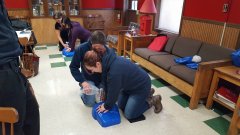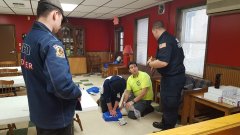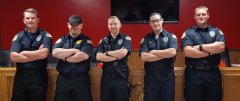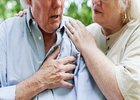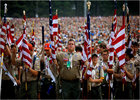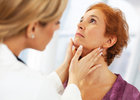General
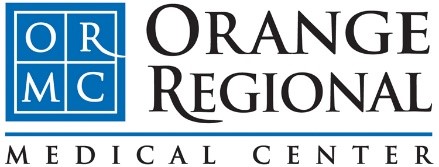 The Minisink Hook & Ladder Co. is proud to announce our certification as a registered Opioid Overdose Prevention Program by the New York State Department of Health!
The Minisink Hook & Ladder Co. is proud to announce our certification as a registered Opioid Overdose Prevention Program by the New York State Department of Health!
Participants will receive training on the use of Naloxone, commonly known as Narcan, to reverse an overdose on opiods, such as heroin or narcotic pain medications. The training lasts approximately 45 minutes and teaches students how to recognize and react to an overdose on opiods, including administration of Narcan. Students who complete the training will receive a kit containing two doses of Narcan. The course and kits are all provided free of charge.
Opioids such as heroin and narcotic pain medications act as depressants on the central nervous system. An overdose of opiods results in a lower breathing rate, eventually causing cardiac arrest and death. Naloxone works by blocking the receptors that the opiate bonds to, restoring respiratory drive. If given correctly, in conjuction with rescue breathing and CPR if needed, the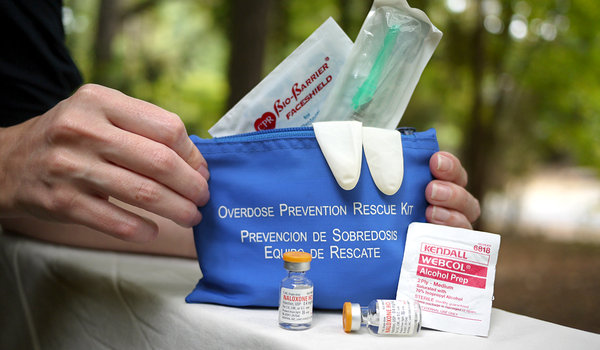 use of Naloxone can reverse the overdose and save lives.
use of Naloxone can reverse the overdose and save lives.
According to the American Society of Addiction Medicine, drug overdose is the leading cause of accidental death in the US, with 52,404 lethal drug overdoses in 2015. Opioid addiction is driving this epidemic, with 20,101 overdose deaths related to prescription pain relievers, and 12,990 overdose deaths related to heroin in 2015.
The clinical director for the program is Dr. Pamela Murphy of Orange Regional Medical Center.
To register for one of our Opioid Overdose Rescue & Naloxone courses, please click here.
For more information on this program, or to request a private training for your group or organization, please contact This email address is being protected from spambots. You need JavaScript enabled to view it.
This training provides an annual review of bloodborne pathogen exposure control principles, practices, and requirements as required by the Occupational Safety and Health Administration (OSHA) Bloodborne Pathogens Standard. This training is required for all personnel who work with human blood or blood products or human tissues, fluids, or cells that are considered "other potentially infectious materials" (OPIM) as defined by OSHA. Please review the following questions to determine if you are required to maintain this training:
DO YOU
- handle human blood products, such as whole blood, plasma, serum, platelets, or white cells?
- handle human body fluids such as semen, cerebrospinal fluid, vaginal secretions, joint fluid, pleural fluid, peritoneal fluid, pericardial fluid, or amniotic fluid? Note - The following human secretions that do not contain blood are NOT covered: urine, feces, vomit, tears, sweat, sputum, nasal secretions, and saliva.
- work with animals, such as primates that are infected with hepatitis B or other blood borne pathogens OR perform tasks where such animals are housed?
- handle unfixed human tissue, organs, or primary cell strains? (e.g., tissues soaked in chemical preservatives such as alcohol or formaldehyde are "fixed")?
- work with hepatitis B virus or other blood borne pathogens or with preparations, such as liquid solutions or powders containing the hepatitis B virus?
- handle blood, blood products, body fluids or unfixed tissues or organs of animals infected with the hepatitis B virus or other blood borne pathogens?
- handle sharp instruments such as knives, needles, scalpels, or scissors which have been used by others working with human blood or other potentially infectious materials to include human organs, tissue or body fluids OR used by others working with similar body parts and fluids from animals infected with the hepatitis B virus or other blood borne pathogens?
- enter areas where other individuals work with human or animal blood, body fluid, tissues or organs which are infected with the hepatitis B virus or other blood borne pathogens AND perform tasks where any of the previously mentioned body substances may come into contact with the laboratory worker's unbroken skin, broken skin, or mucous membranes?
- perform tasks which may potentially result in the lab workers exposed skin or mucous membranes coming in contact with human or animal blood, body fluids, organs, or tissues which are infected with the hepatitis B virus or other blood borne pathogens?
If your answer was YES to any of these questions, then you are considered to be at occupational risk of contracting HBV or other blood borne pathogens.
* We specialize in training to people in the healthcare industry, volunteer and career Fire Departments, Police Departments and medical lab personnel.
Wilderness environments create special situations not usually encountered in an urban or suburban environment. With ASHI’s Wilderness First Aid, Instructors certified to teach CPR/AED, basic first aid, and have wilderness experience can take advantage of ASHI’s flexible instructional design.
This comprehensive 16-20 hour course meets the Boy Scouts of America Wilderness First Aid curriculum and guidelines.
Course content includes:
- Preparation and Assessment
- Preventing and Caring for Injuries
- Environmental Hazards
- Biological Hazards
- Medical Emergencies
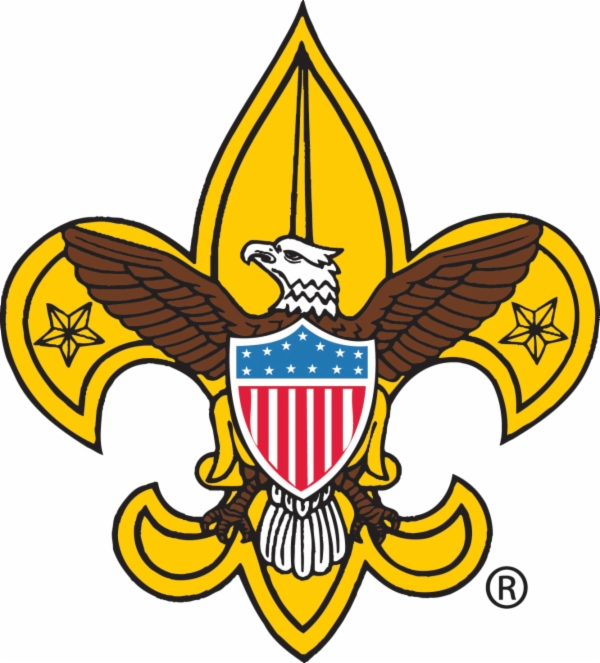
The Chain of Survival: Only As Strong As the Weakest Link

Survivors of sudden cardiac arrest usually have several things in common:
- Early recognition: Someone witnessed the event, recognized the emergency and decided to help;
- Early access: Someone confirmed unresponsiveness and called 9-1-1 or the local emergency number;
- Early CPR: Someone started CPR immediately;
- Early defibrillation: Someone arrived quickly with a defibrillator to shock the heart back to a healthier rhythm;
- Early advanced care: Professional emergency medical services (EMS) personnel provided advanced life support, including airway and breathing support, medications, and in some cases, hypothermia;
- Early follow-up care: The survivor received effective follow-up care.
In other words, in the ideal situation, there is a strong community Chain of Survival. Early defibrillation has been called the critical link in the Chain of Survival because the time from collapse to defibrillation often is the key indicator of survival from sudden cardiac arrest. But the strength of the early defibrillation link depends on the strength of the the links that precede it. And the strength of these two links depends on EMS system planning and quick bystander action. Let’s take a closer look.
CPR & Sudden Cardiac Arrest (SCA)
Fact Sheet
Anyone can learn CPR – and everyone should! Sadly, 70 percent of Americans may feel helpless to act during a cardiac emergency because they either do not know how to administer CPR or their training has significantly lapsed. This alarming statistic could hit close to home, because home is exactly where 88 percent of cardiac arrests occur. Put very simply: The life you save with CPR is mostly likely to be someone you love.
This June, in honor of National CPR Week, the American Heart Association is calling on all Americans to learn how to give Hands-Only® CPR by watching a simple one-minute video at heart.org/cpr. Once you have learned CPR, give 5 people you care about the power to save lives by equipping them to act quickly in a crisis.
Don’t be afraid; your actions can only help. If you see an unresponsive adult who is not breathing or not breathing normally, call 911 and push hard and fast on the center of the chest.
WHY LEARN CPR?
Cardiac arrests are more common than you think, and they can happen to anyone at any time.
- Nearly 383,000 out-of-hospital sudden cardiac arrests occur annually, and 88 percent of cardiac arrests occur at home.
- Many victims appear healthy with no known heart disease or other risk factors.
- Sudden cardiac arrest is not the same as a heart attack.
- Sudden cardiac arrest occurs when electrical impulses in the heart become rapid or chaotic, which causes the heart to suddenly stop beating.
- A heart attack occurs when the blood supply to part of the heart muscle is blocked. A heart attack may cause cardiac arrest.
WHO CAN YOU SAVE WITH CPR?
The life you save with CPR is mostly likely to be a loved one.
- Four out of five cardiac arrests happen at home.
- Statistically speaking, if called on to administer CPR in an emergency, the life you save is likely to be someone at home: a child, a spouse, a parent or a friend.
- African-Americans are almost twice as likely to experience cardiac arrest at home, work or in another public location than Caucasians, and their survival rates are twice as poor as for Caucasians.
WHY TAKE ACTION?
- Failure to act in a cardiac emergency can lead to unnecessary deaths.
- Effective bystander CPR provided immediately after sudden cardiac arrest can double or triple a victim’s chance of survival, but only 32 percent of cardiac arrest victims get CPR from a bystander.
- Sadly, less than eight percent of people who suffer cardiac arrest outside the hospital survive.
- The American Heart Association trains more than 12 million people in CPR annually, to equip Americans with the skills they need to perform bystander CPR.
"I took this class a couple of weeks ago, the Firefighters gave excellent instruction and shared stories about successful CPR in the field. I am a mom and I think this training is important for everyone. I think it should be a requirement for all. Thank you again Goshen Minisink Ladder 1. I will tell my mom friends about your class"
-Jennifer C. - Goshen, New York
"I took my BLS recertification here and it was great, fast and to the point, I would use them again".
- Mike F. - Chester, New York
"If you need to get your BLS certification, take it here. It was really quick, the least expensive class I found and actually pretty entertaining and informative. The Goshen Firefighters are really good instructors and will keep repeating the info (in a good way) so you pass the test at the end easily. You'll leave feeling informed and ready to perform CPR. Time will pass pretty quickly too! For those of you that wait until the last minute and need it immediately, this is where you need to go!"
- Michelle T. - Middletown, New York
If you have any problems registering please email us at This email address is being protected from spambots. You need JavaScript enabled to view it.
Goshen CPR
rThis email address is being protected from spambots. You need JavaScript enabled to view it.
or call 845-605-9901 and leave a message
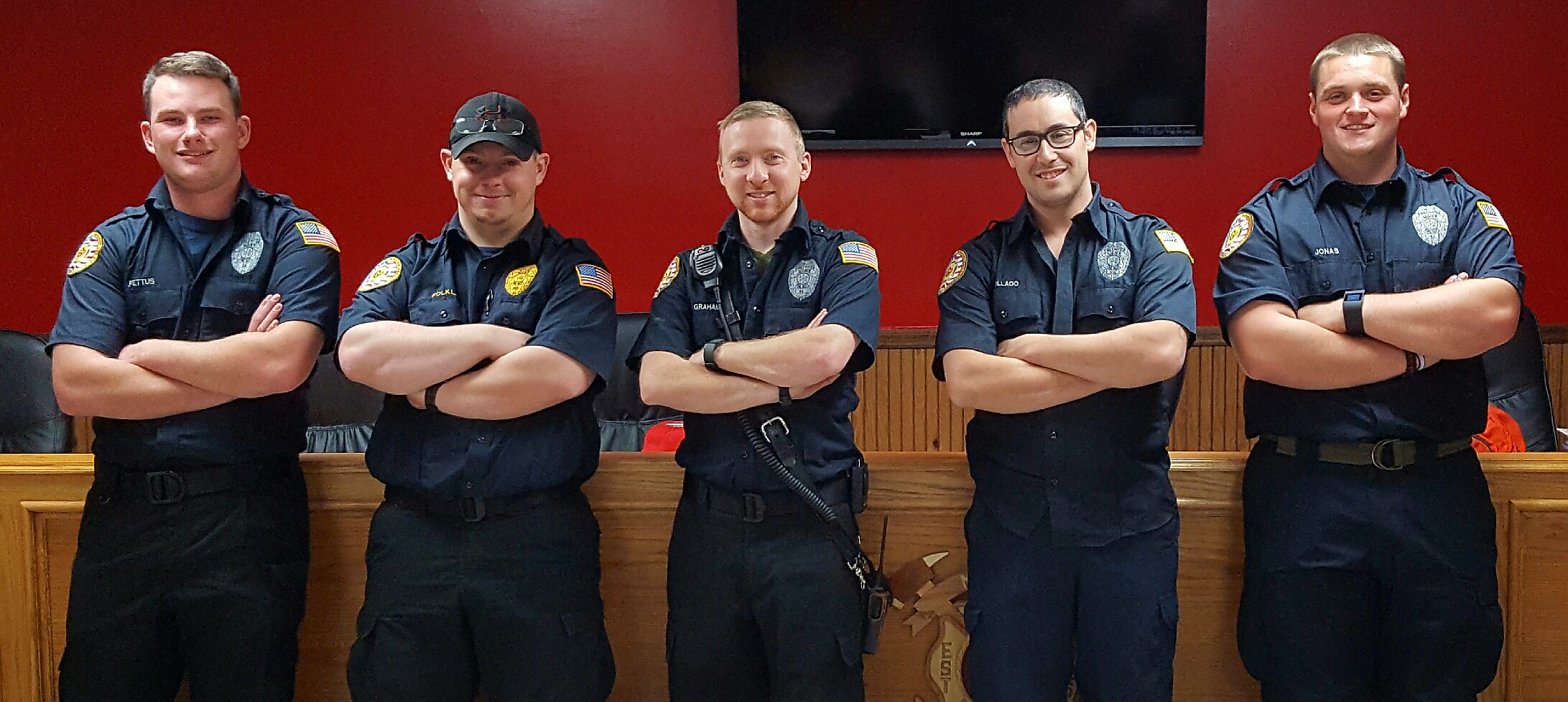
Emergency Medical Responder (equivalent to NYS CFR-D)
Emergency Oxygen Administration
CABS- Child and Babysitting Safety
Courses Similar to Healthcare Provider CPR
Basic Life Support (BLS) For Healthcare Providers
Friends & Family CPR
Courses for Individuals
• BLS for Providers certification class - $75 - Recertification/Renewal - $60
• Heartsaver CPR / AED certification class - $75
• Heartsaver CPR / AED + First Aid - $100
Recent Articles
Boy Scout Certified First Aid Course
This comprehensive 16-20 hour course is ideal for Instructors certified to teach CPR, AED, and basic first aid, who have wilderness experience.
Bloodborne Pathogen Certification
This training is required for all personnel who work with human blood or blood products such as those workers in the medical, police, fire, and ems field.
Testimonials
I was watching my little brother and he started choking. I followed the procedures I learned your class I needed for school and my brother is alive today thanks to you.
I not only receive more babysitting jobs on the weekends due to my CPR training, but I feel more confident when I'm watching kids thanks to you.
Links
AHA eCards issued same day! Complete your course and have your certification in hand the same day! Verify your eCards HERE
Please visit some useful links as we always encourage continuing education.
Group Rates
We offer discounts to groups and organizations
Connect with us
Goshen CPR - registration@goshencpr.com
Serving:
Orange County
Dutchess County
Rockland County
Westchester County
Putnam County
+ More


